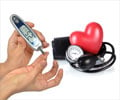The European Society of Hypertension (ESH) and the European Society of Cardiology (ESC) have issued new guidelines for reducing the risk of hypertension.

First produced in 2003, the original version of the joint ESH/ESC Guidelines for the managementof arterial hypertension, became one of the most highly-cited medical papers in the world. The 2013 Guidelines – which replace the 2007 edition – give state of the science recommendations which show how the hypertension landscape has changed, and indicate what needs to be done to reduce mortality and morbidity from high blood pressure and associated conditions.
Hypertension has been described as "the leading global risk for mortality in the world"1. It continues to affect between 30 and 45% of the European population. The authors of the Guidelines express disappointment that this figure has remained high since the 2003 edition. "We really need to raise awareness of the condition", said Professor Giuseppe Mancia (Milan, Italy). This is a condition that can be controlled if treated properly.
According to the report, "lifestyle changes are the cornerstone for the prevention of hypertension", including reduction of salt (to roughly half present levels) and alcohol, as well as maintaining a healthy body weight, regular exercise, and the elimination of smoking2. Additionally, patients and doctors must be aware that once hypertension has developed, it can be treated with drug therapy. The Guidelines highlight the lack of awareness of the potential problems of hypertension amongst patients, with poor long-term adherence to treatment, and the "inertia" of doctors, who don't take appropriate action when confronted with patients with uncontrolled blood pressure.
The authors state that "despite overwhelming evidence that hypertension is a major cardiovascular risk, studies show that many are still unaware of the condition, that target blood pressure levels are seldom achieved". They also note that there are wide variations in hypertension care in Europe, but that team-based care, with greater nurse involvement, has a better record of success that more standard care3.
The 2013 Task Force reviewed all relevant data since the last revision (in 2007), with 18 specific diagnostic and therapeutic areas identified as containing significant change.
Advertisement
Other changes include:
- An increasing role for home blood pressure monitoring, alongside ambulatory blood pressure monitoring4
- A greater emphasis on assessing the totality of risk factors for cardiovascular and other diseases. For example, most people with hypertension also have additional risk factors such as organ damage, diabetes, and other cardiovascular risk factors. These need to be considered together before initiating treatment, and during the follow-up5
- Special emphasis on specific groups, e.g. diabetics, the young, the elderly, and drug treatment of the over 80s. Women are also considered separately, e.g. during pregnancy. Special consideration is given to new treatments such as renal denervation for resistant hypertension – which is described as "promising", although more trials are called for6
- New guidance on how and when to take anti-hypertensive drugs. The report indicated no treatment for high normal blood pressure, no specific preference for single drug therapy, and an updated protocol for drugs taken in combination. The guidance takes a liberal attitude to choice of first step drugs, noting the evidence that the beneficial effect of hypertension depends largely on blood pressure lowering. Rather than presenting a hierarchy of drugs (a generic 1st, 2nd, 3rd choice and so on), the approach taken promotes individualized treatment, i.e. to help physicians to decide which drugs to give in which clinical/demographic condition7
Advertisement
Professor Robert Fagard, Co-Chairperson of the Guidelines Task Force commented"We are very happy to publish these comprehensive evidence-based Guidelines. It's the right time to carry out this revision, as we are able to include many significant studies and many new results since the previous version. We have included many of the gold standard randomized controlled trials (RCT) studies, but at the same time we have graded all the evidence so that clinicians can see how strong the evidence base is for each recommendation. The important thing now is for physicians put these recommendations into use".
Source-Eurekalert














